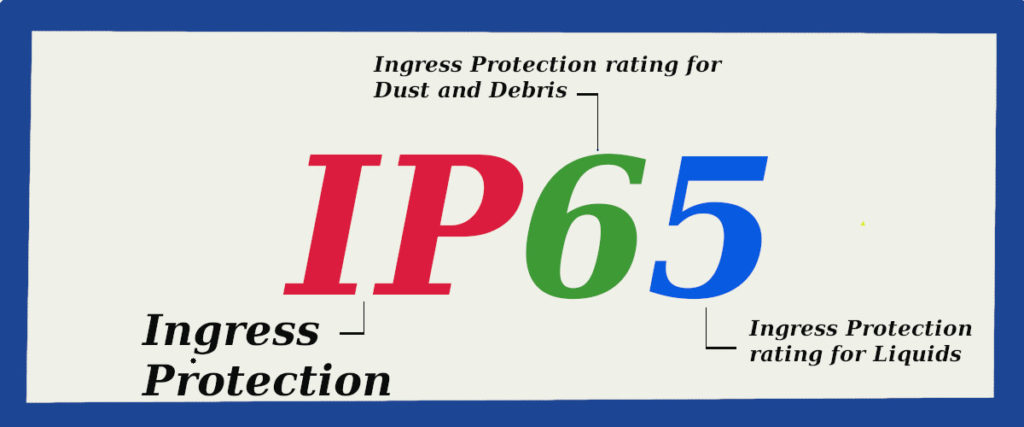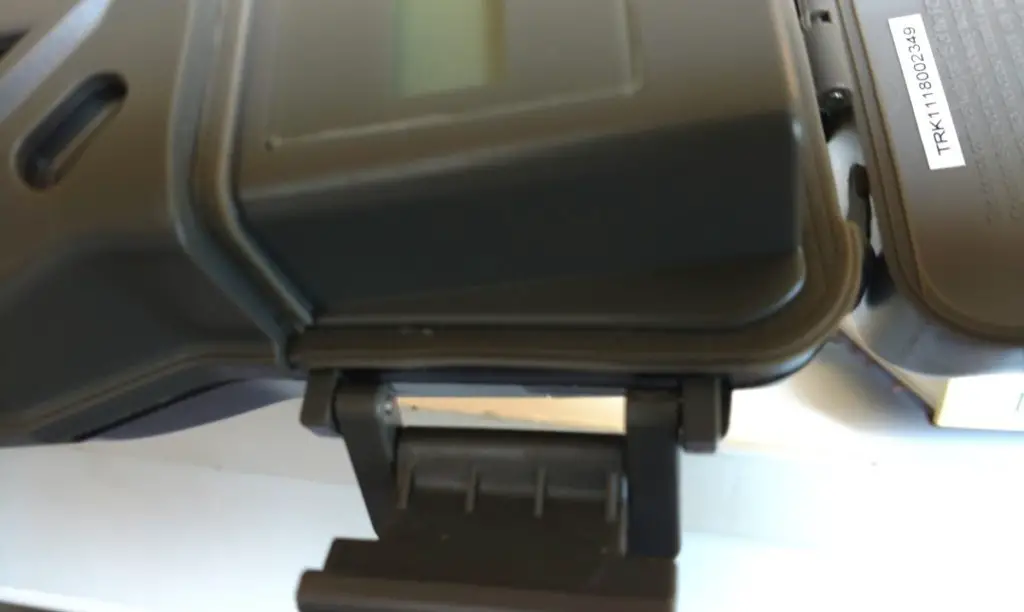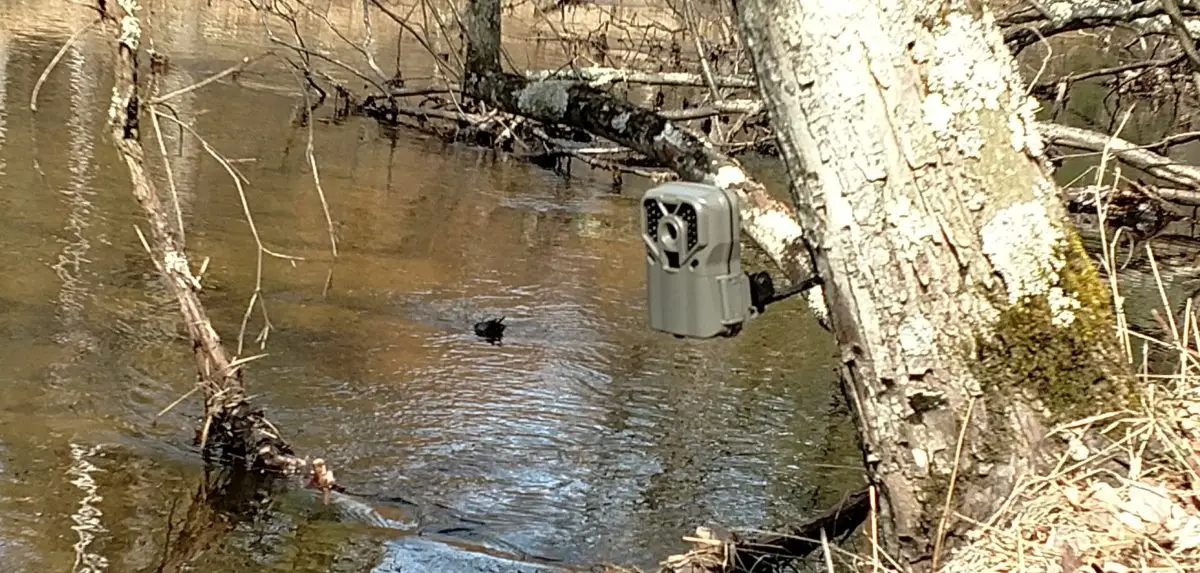Trail cameras are built to be tough. They are designed to take the beatings of mother nature, from debris and dust, to cold weather, snow, ice, rain, heat and fog, all while performing intricate functions at a high level. It is a lot to ask of an electrical device that simply runs off of a few AA batteries, and fits into the palm of your hand.
As durable as trail cameras are, we often ask ourselves: Are trail cameras waterproof?
Trail cameras are not waterproof, but are water resistant. They are designed to withstand heavy rain and snow, but can not be submerged into water.
While it might seem obvious that you shouldn’t dunk your electronic device into a stream or lake, just how much water can a trail camera withstand, and still function properly?
Waterproof or Water Resistant
The technical definition of waterproof is being impervious to water. When we think of water proof often our minds go to Rolex watches or a pair of knee high muck boots. Trail cameras, whoever are not on this list.
In fact, all trail cameras are simply water resistant. They are able to resist the penetration of water up to a certain point, but are not completely impervious to water.
How much water will a trail camera resist? Well, that depends upon the trail camera manufacturer and the design of the trail camera. We do have a tool, known as the Ingress Protection Rating (IP), that gives us insight to how much water is too much.
What is an IP rating?
The Ingress Protection rating (IP) tells you how resistant the equipment is to dust and liquids. It is a simple code that covers a range of international standards for enclosures and electrical equipment. This code was developed to provide customers with more information about how weatherproof an enclosure is, rather than just claiming that it is weatherproof.

The IR rating is often represented by two numbers, similar to IR66 or IR54. The first digit in the number represents the resistance to dust, and the second number is the resistance to liquids. The higher the number the more resistance they are. Here is a breakdown of the levels of resistance each number represents.
Dust IP Protection
| Protection Level | Size of Object Protection | Effective Against |
|---|---|---|
| 0 | No Protection | No protection against ingress of objects |
| 1 | 2″ / 50mm | Protects against any large surface of the body, such as the back of the hand. It does not however protect against deliberate contact |
| 2 | .5″ / 12mm | Protects against fingers and other small objects |
| 3 | 2.5mm | Protects against tools and small wires |
| 4 | 1mm | Protects against all wires, screws, paper clips, and other very small diameter objects |
| 5 | Dust Protection | Ingress of all dust particles is not protected, but will prevent sufficient quantities of dust. |
| 6 | Dust Tight | Complete protection, no ingress of any dust particles |
Liquid IP Protection
| Protection Level | Amount of Liquid Protected Against | Effective Against |
|---|---|---|
| 0 | No Protection | Not Protected Against water |
| 1 | Dripping Water | Vertically dripping water will have no effect |
| 2 | Dripping water when tilted to 15 Degrees | Vertically dripping water has no effect when the camera is tilted up to 15 degrees from its normal postion |
| 3 | Spraying water | Spraying water has no effect on the camera from an angle up to 60 degrees |
| 4 | Splashing water | Liquid splashing up against the camera from any direction will have no effect |
| 5 | Water Jets | Low pressure water (6.3mm nozzle) sprayed from any direction will have no effects |
| 6 | Powerful Water Jets | High pressure water ( 12.5mm nozzle) sprayed on the camera from any direction will have no effects |
| 7 | Immersion up to 1 meter | Temporary immersion of camera in water up to 1 meter is not harmful |
| 8 | Immersion beyond 1 meter | Will sustain long periods of immersion under pressure, without harmful penetration |
Trail Camera IP Ratings
Now that we have a better understanding of the IP ratings, the question that emerges is where do trail cameras fall on the IP rating scale? Well the truth is that when it comes to trail cameras, it is a little bit complicated.
In many cases obtaining an IP rating for products is voluntary, and trail camera companies do not regularly promote an IP rating within their specs. So, I reached out to 17 of the leading trail camera manufacturers, to obtain information about their IP ratings.
Most manufacturers claimed they did not have an IP rating, others couldn’t “locate” that information. Regardless of their reasoning to withhold this information, I did get a response from three manufacturers that was very straight forward and honest.
Reconyx trail cameras have an IP rating of IP65. Meaning that their cameras are completely protected against dust and debris and that they have protection against liquids at low pressure from any direction.
Apeman and Victure trail camera companies gave me an IP rating of IP66. This indicates that they are not only protected completly from dust, but they are not effected by high pressure water from any direction.
Simply because of the lack of response from other trail camera manufacturers, doesn’t necessarily mean that they do not test their products. And it doesn’t mean that they are unreliable in the field. In fact, even with a limited amount of information obtained by these trail camera companies, there is a lot of information that we can glean from the ones who did provide information.
It is important to know that almost all of the trail cameras that we have on today’s market are produced in China, on virtually the same city block. While specs, and engineering are formulated differently from each trail camera company, the process of manufacturing is going to be very similar from trail camera to trail camera. Meaning, we can safely assume that almost all trail cameras are going to fall somewhere in between a IP65 and IP66 rating.
Different Types of Housing Seals
As a consumer there are a few different things that we can look out for, to ensure that our trail cameras will be water proof. The first of which is the type of rubber seal used for the housing.
There are essentially two types of caskets that trail cameras use around the housing of the trail camera: c gaskets, and round gaskets.
The C gasket is the more commonly used. These gaskets are a fixed gasket that is connected into the camera. The use of this gasket is mainly for the bennefit of allowing the rubber to expand and contract during different weather conditions allowing the housing unit to seal.

These are the most reliable gaskets on the market, however because they are permantley fixed to the camera, if a gasket gets worn out or ripped, they are not easy to replace. In fact most often in order to get these gaskets replaced, it requires sending the camera back to the manufacturer.
The round gasket however, is easily replaced at home. This type of gasket is not as effective at sealing the housing though. It does not have the room to expand and contract with weather conditions, and often you will see trail camera temperature ratings for cameras that use this gasket, to be a much smaller range.
Tight Latches
While the gasket is an important aspect of keeping water out of a trail camera, it is only as effective as the pressure that is applied by the housing latches. Most trail cameras use either a single or double latching system on their housing doors. It is important to ensure that the latches don’t just simply close, but rather pull the door tightly.
Maintenance
When you first get a new trail camera, they are designed to be water resistant. The manufacturer checks for defects and periodically checks cameras coming off the line, to ensure they meet their standards.
Once you get the trail camera home, and place it into the field, the responsibility to maintain those standards lies solely on your shoulders. You can ensure that your trail camera stays consistent with the manufacturers standards by performing a few simply preventative maintenance checks.
- Whenever you check your camera, simply visually inspect the gasket for any wear or rips
- Make sure that the hinges and latches are tight, ensuring there is no loose pins or clasps that could restrict how tightly the latch closes
- Once a year apply a silicone based rubber seal protector. This will keep the gasket from dry rotting
- If you are to store you camera during the off season make sure that it is stored in a cool dry place, this too prevents dry rot.
- If there are any noticeable problems with the sealing of the trail camera, contact the manufacturer immediately and get it in for repair. The sooner you do this, the less likely there will be damage to the camera.
While trail cameras may no be water proof, they are in fact water resistant, and they are manufactured to withstand the tests of mother nature. Follow these few basic steps, and rest easy knowing that your trial camera is sealed and protected.

